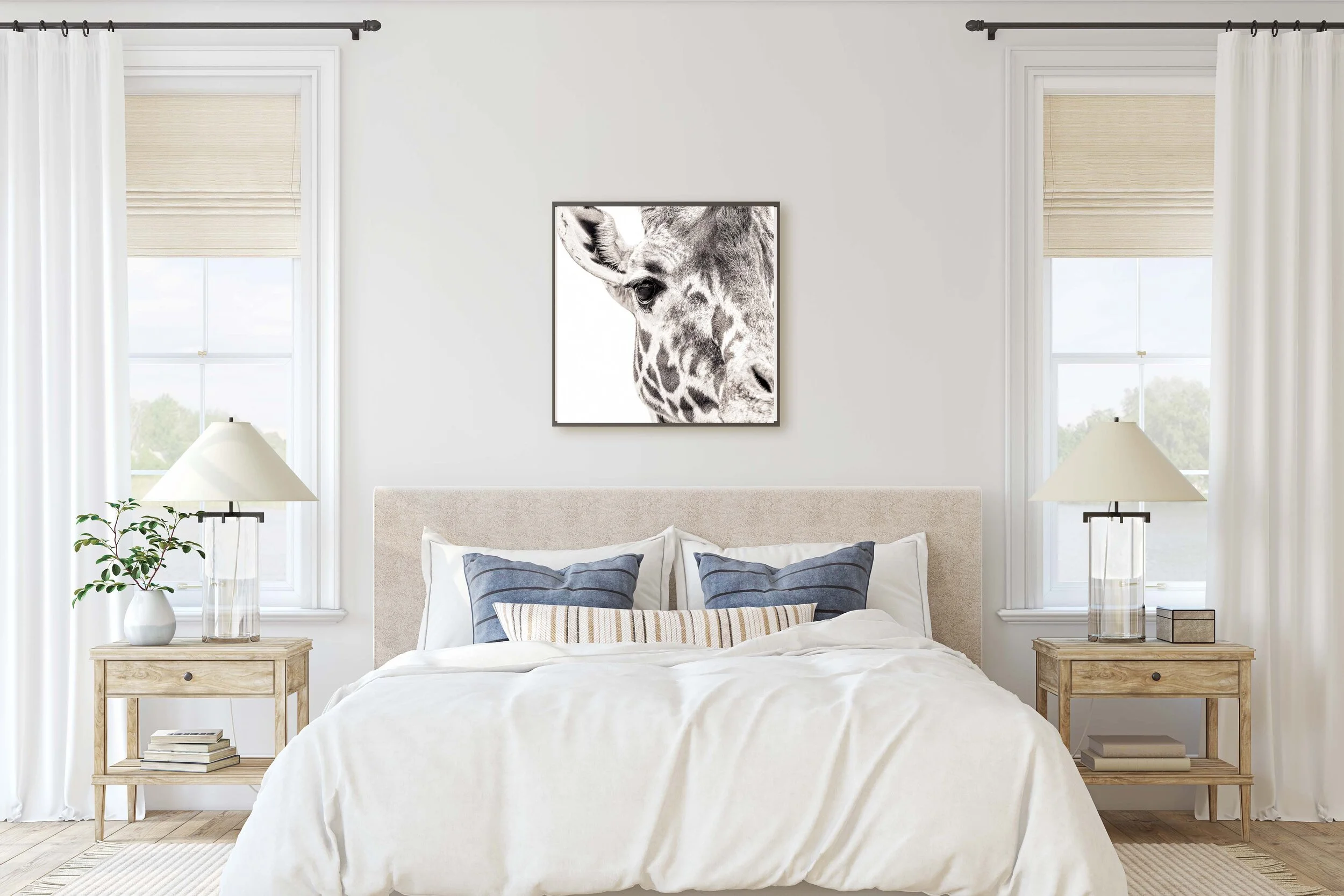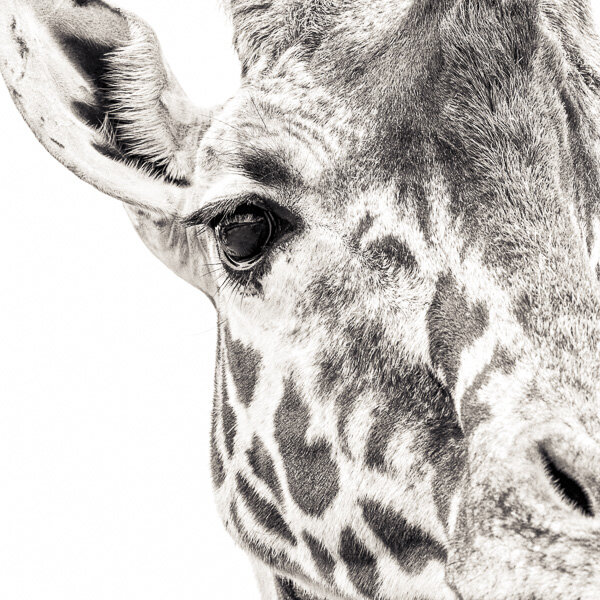The Joy of Giraffes
I really enjoyed photographing these giraffes for my Behind The Eyes series of black and white animal prints. It was fun, but also quite a challenge; not just because they are tall, and more difficult to fit in the camera frame close-up, but also because their head and neck move surprisingly fast; a little like a slightly out-of-control construction site crane. Just as I framed a portrait and had a clean sharp focus, suddenly my view through the lens was of the out-of-focus trees in the distance. And no giraffe. But, patience is a virtue, so they say, and I was working to the giraffes’ timetable, so, re-frame the composition, and try again. And again. Gradually, I realised I was able to predict the giraffes’ movements a little better, becoming more in-sync with these towering animals and their rapid head movements, and after a while they rewarded me with a number of portraits.
We’ve seen them in books and on television documentaries, but it’s not until you actually meet a giraffe do you fully appreciate just how unusual and beautiful they are. With the legs of a mantis, the spots of a leopard, and the skyscraper neck, the giraffe encapsulates so many features of evolution in one animal - previous versions adapting and altering with stops and starts, advancing and reverting over many millions of years, until we reach the wonderful modern giraffe.
The tallest mammals in the world, modern giraffes (Giraffa camelopardalis - from the old name “camel-leopard) grow on average to 14-18 feet tall (4-5m) and weigh in at around 1,500–3,000lb (680-1360kg). Their legs alone can be six feet long (1.8m), which allows them to be fast runners: 35mph (56kph) over short distances, with a cruising speed of around 10mph (16kph) over longer distances.
They live for around 25 years on average in the wild, where they roam the open plains of sub-Saharan Africa in small groups, which tighten up when there’s a predator around.
It's fascinating to watch these beautiful creatures run and move about. They are elegant when they run and feed on the tallest trees, but rather less so when they drink at watering holes - spreading their legs or kneeling to get their heads low enough to the water. This position makes them vulnerable to predators, but luckily they only have to drink every few days as they get most of the moisture they need from their food.
Giraffes spend most of their time feeding, eating a huge amount of leaves each week, with those of the acacia tree being a particular favourite. As the the males are taller, they will tend to eat from the trees’ highest branches, leaving the lower ones for the females; and like cows, they regurgitate their food as a ball and chew it as a cud, usually during the heat of the day. Their long 19” (48cm) tongues are ideal for picking off succulent leaves and buds, and also for getting around the Acacia trees’ long, sharp thorns. Flowers are even a source of food when in season, which have twice as much protein as the leaves.
More Fun Facts About Giraffes
A giraffe’s heart can weigh around 25lb (11kg) - it needs to be that big in order to pump blood around those long legs and neck.
Each subspecies of giraffe are differentiated by the variation of their leaf-like patterns, ranging from almost white to nearly black, depending on where they live and their food source, and each giraffe has its own unique pattern - just like a fingerprint!
Giraffes have horns, called ossicones, which are used by the males to spar when head-butting other males.
Their closest relative is the okapi, or “forest giraffe”.
Giraffes are not the most sweet-smelling of animals. They smell bad in order to keep away ticks and fungus.
Their tongues are a dark colour, thought to contain extra melanin to help protect against sun burn. And their eyes are the size of golf balls!
Females give birth standing up, with their calves falling more than five feet to the ground on delivery! Within half an hour of this, the youngsters are usually standing upright and within ten short hours are able to run alongside their mother.
Are Giraffes Endangered?
The worldwide giraffe population has declined by nearly 40% in the last 30 years, with around 68,000 mature giraffes (2015) remaining in the wild. They are assessed as ‘Vulnerable’ according to the IUCN Red List
Herds are fragmented and face many threats, mainly from the loss of their habitat due to deforestation, land-use conversions and human population growth; but also from drought, civil unrest, disease and poaching.







